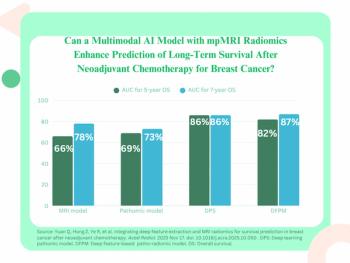
MRI Combo Improves Pulmonary Embolism Detection, Provides Alternative to CT
The addition of two MRI sequences to a common MR angiography technique significantly improves detection of pulmonary embolism and only takes 15 minutes to set up and perform.
The addition of two MRI sequences to a common MR angiography technique significantly improves detection of
Pulmonary embolism is traditionally diagnosed with the gold standard CT, but that is not without its risks: exposure to ionizing radiation and the use of contrast agents which may be contraindicated in some patients. For these patients, MR pulmonary angiography (MRPA) has been used, but there has been some concern regarding the quality of the images.
Using 22 patients with a diagnosis of PE confirmed by CT angiography (CTA), researchers from the University of Arizona College of Medicine in Tucson assessed the impact of adding two additional MRI sequences on the accuracy of MRPA: contrast-enhanced volumetric interpolated breath-hold examination (VIBE) and non-contrast true fast imaging with steady-state precession (true FISP). The results showed that MRPA had a sensitivity of 55 percent; true FISP of 67 percent; and VIBE of 73 percent. Once the three had been combined, the overall detection rate was 84 percent. MRPA showed one false positive, the rest were 100 percent accurate.
Not all facilities are set up for this type of testing, so the researchers determined that MRPA should be reserved for patients who cannot undergo standard CT testing, such as pregnant women or those who have allergies to contrast agents, and only be performed at centers where they are done on a routine basis and they are performed well.
Diego R. Martin, MD, PhD, head of the Department of Radiology at the university and the one of the authors of the study, points out that developments in MRI technology is moving more quickly than CT. “The images we’re getting are already significantly better than they were a year ago. There is no doubt that in the future, we will be able to offer a non-radiation based alternative to CT for the diagnosis of pulmonary embolism.”
Newsletter
Stay at the forefront of radiology with the Diagnostic Imaging newsletter, delivering the latest news, clinical insights, and imaging advancements for today’s radiologists.




























